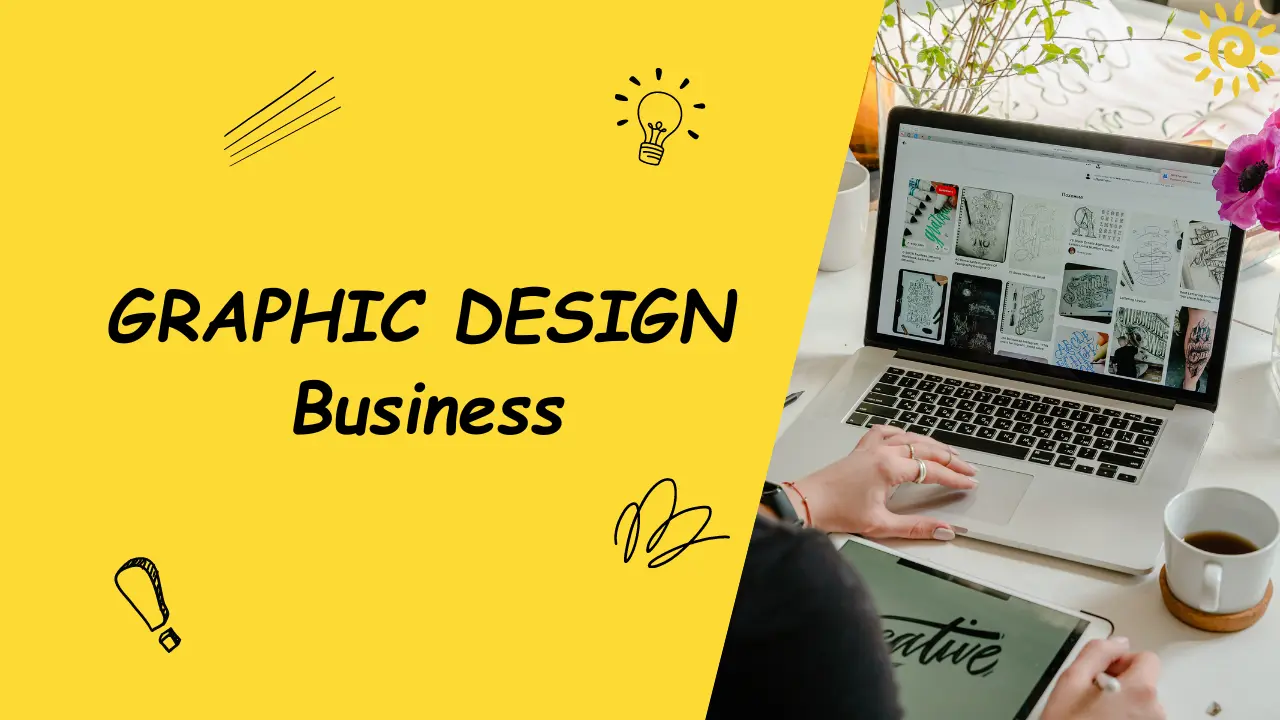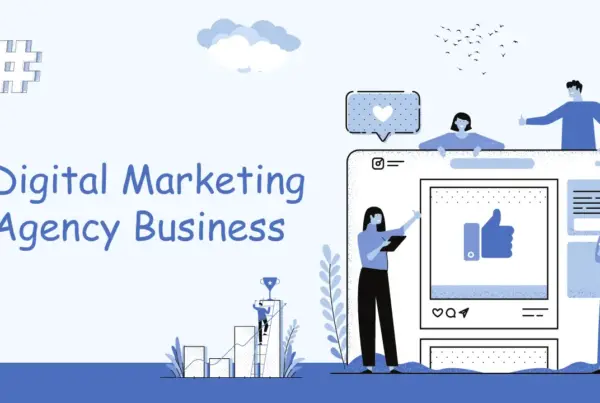Starting a top-level graphic design business is a sensational venture filled with creative opportunities and entrepreneurial challenges. With the demand for high-quality design services on the rise, there has never been a better time to turn your passion for design into a successful firm business.
From 2018 to 2023, over the past five years, the revenue for the graphic designer industry in the US market has grown at a CAGR of 2.8%, reaching an estimated $16.6bn – IBIS World.
Another statistic shows that graphic design services revenue in the United States will be around $1.192,3 million by the end of 2024 –Statista.
However, if you want to start a graphic design business that fosters innovation, efficient strategy, exceptional work, meaningful client relationships, and enhances your brand. Then I heartily welcome you to this exciting chapter in the graphic design business.
But before taking you to the step-by-step guide, it would be beneficial to know what Graphic Design is and its type of business first.
So, without more delay, let’s begin!
What Is Graphic Design?
Graphic design is a creative, craft process of building visual communication materials intended to convey messages with specific objectives to social groups.
More precisely, graphic design is an academic discipline, a profession, and an applied art that deals with the art and practice of conceptualizing, planning, and experiencing visual and textual content.
In a word, it is a process that combines art and technology to use users’ ideas as a means of communication.
As you can see, many people can illustrate and design by hand. They apply these skills to produce drastic sketches and mock-ups. However, graphic design expertise is demonstrated by using software such as Adobe Illustrator, Adobe Photoshop, and InDesign.
Product design, branding design, animation design, print design, and website design are the names of a few popular graphic designs you have ever heard of.
Types of Graphic Design Business
Without any doubt, graphic design is trendy as a versatile field wrapped with various niches and specializations. Following are some of the most common yet famous genres of graphic design businesses you can run with:
- Branding and Identity Design
- Web Design and Development Studios
- Advertising and Marketing
- Illustration Studios
- Infographic Design Services
- Print Design Studios
- Motion Graphics & Animation Studios
Selecting the authentic niche or specialization is undeniably a high priority in starting a graphic design business, as it helps you focus on your work skills and experience strengths and meet the specific client needs.
Indeed, there are lots of agencies and local designers who offer a combination of these services. So, if you need a comprehensive design solution for yourself or your client, you have to choose to be more specific or run with the combination.
How To Start A Graphic Design Business
In essence, graphic design business offers top-notch services that elevate brands and drive results. So, in this comprehensive guide, you will learn every mandatory step, from laying the groundwork to attracting your first clients and beyond.
Define Your Niche
Identifying Your Specialty: You need to determine the specific area of graphic design you desire to excel in. Whether it’s branding, web design, illustration, or print design, the choice is yours.
Research Market Demand: Right after that, you must conduct thorough market research. It will help you understand the demand for your chosen niche and identify potential competitors.
Create a Business Plan
Executive Summary: Now, deliberately draw a concise overview of your business goals, target market, and financial projections.
Market Analysis: Then, cautiously analyze the current state of the graphic design industry. For example, you can explore the latest trends, challenges, and opportunities in modern digital design.
Services Offered: Demonstrate the exact scale of your outstanding services. You can start by highlighting your unique selling points and competitive advantages.
Marketing Strategy: Establishing a comprehensive marketing plan that promotes your services and attracts your clients is paramount. You can include networking events, online channels, or even strategic partnerships.
Financial Projections: You must estimate your startup costs, operating expenses, and revenue projections. At least for the first few years of your business operation.
Register Your Business
Choose a Legal Structure: You must decide to pick a legal framework. For instance, it might be a sole proprietorship, partnership, LLC, or corporation. But it would help if you took into account liability protection and tax implications.
Register Your Business Name: First of all, find out that your chosen business name is available. Then, register it with the appropriate state and local authorities.
Obtain Licenses and Permits: For better working experience, you must research and obtain any necessary business licenses. And you also need permits required to operate legally in your jurisdiction.
Set Up Your Workspace
Design Studio Essentials: Now, you have entered the investment category. Find and carefully invest in the necessary equipment and software tools to facilitate your design work. It includes computers, design software, graphic tablets, office furniture, and more.
Create a Creative Environment: You must design and develop a workspace that inspires creativity and productivity. Start with ample natural light, comfortable seating, and organizational systems to keep your projects on track.
Build Your Portfolio
Showcase Your Work: Highlighting your unique style and abilities is essential to entice your target audience. It would help if you built a portfolio showcasing your best design projects across different mediums and industries.
Update Regularly: Take advantage of every opportunity to update with your most recent projects and case studies. Always step ahead to demonstrate your evolving skills and expertise to potential clients.
Develop Your Brand Identity
Logo and Visual Identity: You need to design a unique logo and visual identity that reflects the personality and values of your graphic design firm. Also, keep a close eye on ensuring consistency across all your branding materials.
Brand Messaging: Creating a compelling brand story and messaging for your business is very beneficial. But remember, it should communicate your firm’s unique value proposition and resonate with your target audience.
Market Your Services
Website Development: There is no alternative to creating a professional website to showcase your services, client testimonials, and portfolio. At the same time, optimizing it for search engines is very beneficial to attracting organic traffic.
Social Media Presence: Your presence on social media serves as an unstoppable growth tool for any business you have. Hence, it would help if you established a strong presence on social media platforms.
For example, you can use Facebook, Instagram, Behance, and LinkedIn to showcase your work. Networking with industry professionals will also be a great benefit to you in connecting with potential clients.
Networking and Outreach: You can attend industry events, join professional associations, and participate in online forums to connect with potential clients. You can also collaborate and build relationships within the design community.
Secure Your First Clients
Reach Out to Your Network: It is important to take advantage of your existing network of contacts, friends, and colleagues. You can spread the word about your new graphic design firm, and dispatch solicit referrals.
Offer Special Promotions: Another essential factor is to check out your services and generate initial interest in your firm. You can introduce promotional offers or discounts to encourage potential clients.
Provide Exceptional Service: You must deliver outstanding design work and exceptional customer service to impress your first clients. At the same time, you can also encourage repeat business and referrals.
Scale Your Business
Hire Additional Talent: As your business develops, consider hiring additional freelancers or designers to help you manage the thriving workload. Since they are seasoned professionals, they will help expand your service offering.
Diversify Your Revenue Streams: It is imperative to explore opportunities to diversify your business’s revenue streams. You can also offer additional services such as design workshops, online courses, or design templates.
Invest in Marketing and Expansion: You must increase resources for marketing initiatives and business expansion strategies. It will help you reach new markets, attract more prominent clients, and increase your brand presence in the industry.
Final Thought
It is indeed a fact that starting your graphic design business requires careful planning, creativity, and dedication. But the rewards of building a successful business in a field you love are immeasurable. By following the steps outlined in this guide and staying true to your passion for design, you can turn your dream of owning a thriving graphic design firm into a reality.
From business validation to delivering results to clients, all steps require patience, strategy, and business management skills. By improving visual hierarchy, applying page layout techniques, striking typography, and interactive design elements to optimize user experience, a graphic design can take your business to the pinnacle of growth.





This is a great checklist for anyone thinking of starting a graphic design business. I especially like the tip about finding your niche early on.